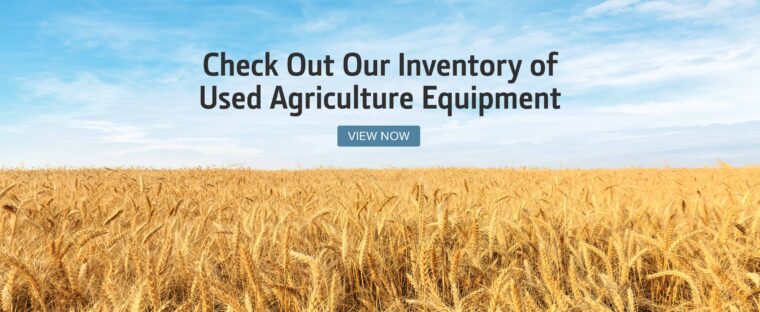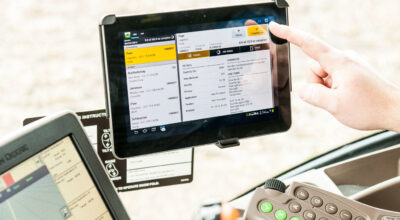Spring planting is the foundation of a successful growing season, significantly impacting crop performance and yield potential. Precision agriculture technology is continually evolving to support this vital process and ensure better outcomes at harvest.

In particular, precision planting technology offers enhanced accuracy, efficiency, and sustainability during the seed sowing process. Accurate placement is critical because even small deviations from optimal seed spacing and depth can affect germination and ultimately yield.
From GPS-guided machinery to AI-powered analytics, let’s take a look at the precision planting innovations driving higher crop productivity and smarter resource management for farm operations.
1. GPS-Guided Planters
Precision planters equipped with GPS technology enable farmers to ensure each seed is placed according to the crop’s exact spacing and depth requirements. This ensures rows are never overlapped — and planted twice — or skipped, maximizing yield without wasting seed. The result is uniform crop emergence and higher overall productivity.
Additionally, GPS-guided systems enable straight, repeatable rows, which makes subsequent field operations like spraying and harvesting more efficient. Capabilities like John Deere’s AutoTrac, which utilizes Starfire GPS receivers, help reduce operator fatigue and enhance accuracy during long planting days.
2. Variable Rate Seeding (VRS)
Since no two acres are exactly alike, variable rate seeding (VRS) is useful for customizing seeding rates based on soil type, moisture levels, and yield potential.
Using field data and zone maps, VRS technology adjusts planting density in real time, increasing populations in high-performing areas and scaling back in lower-potential zones. This approach reduces seed waste while maximizing yield, leading to better return on investment.
Solutions with built-in VSR capabilities like John Deere’s MaxEmerge 5e system help producers fine-tune input use while maintaining yield goals.
3. Smart Sensors and AI Integration
Precision planting technology has become smarter thanks to the integration of sensors that collect planting data to fuel AI-driven insights.
These sensors continuously monitor factors like:
- Seed spacing: The distance between individual seeds within a row
- Singulation: The planter’s ability to release one seed at a time without doubles or skips
- Downforce: The pressure applied to the planter row unit that keeps the seed opener and gauge wheels firmly in contact with the soil surface, ensuring consistent planting depth
As the sensors collect this data, it flows directly to analytics systems integrated with AI, which provides immediate feedback. As a result, operators can make in-field corrections that maintain planting quality across variable conditions. Over time, AI-driven insights also help farm operators refine planting strategies and make proactive adjustments by identifying patterns and predicting crop yields and other outcomes.
4. High-Speed Planters
Speed and accuracy don’t have to be mutually exclusive. Today’s high-speed planters are designed to maintain precision at faster planting speeds, helping operators cover more acres in less time without sacrificing quality.
For example, John Deere’s ExactEmerge high-speed planter technology uses a patented BrushBelt delivery system and advanced metering to ensure each seed lands exactly where intended. This capability is especially valuable during narrow spring weather windows when planting time is at a premium.
5. Drone and Satellite Monitoring for Planting Decisions
Before seeds even hit the soil, drones and satellite imagery can provide crucial data to inform planting decisions. These technologies support pre-planting field assessments, making it possible to detect compaction issues, evaluate residue cover, or identify variability in soil moisture and nutrient levels.
Satellite-based connectivity solutions like John Deere’s JDLink provide reliable connectivity for precision agriculture technologies, even in remote areas with minimal cellular coverage.
6. Sustainable Precision Planting Practices
In addition to improving yields, precision planting is a path toward more sustainable agriculture. Applying the right seed at the right rate in the right place reduces input waste, minimizes soil disturbance, and conserves fuel and energy during both planting and harvesting.
Plus, access to granular planting data allows growers to track the long-term impact of planting decisions on soil health and water usage, enabling a more responsible use of natural resources.
Precision Planting Sets the Stage for a More Productive Season
Strategic spring planting is the foundation for a successful harvest season. Precision ag products enable growers to optimize the entire growing cycle and make data-driven decisions along the way.
To explore the full lineup of John Deere precision planting equipment and find the right solutions for your operation, connect with your local John Deere dealer. Visit our dealer locator to find the location closest to you.




